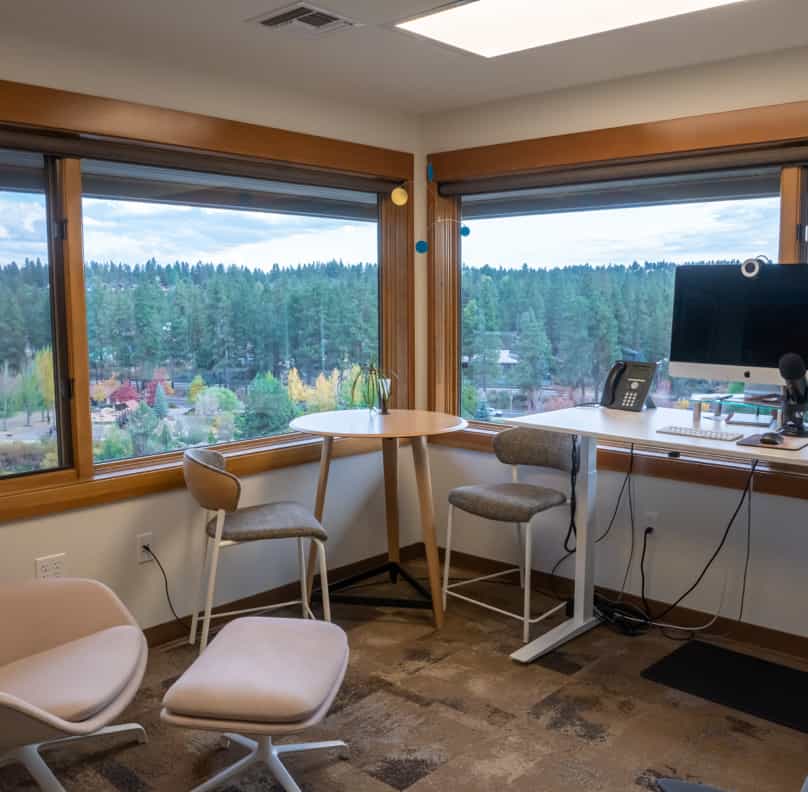
Burnout is still a widespread issue among us, as Jennifer Moss has explained in her book, The Burnout Epidemic. Companies might attempt to address this by offering more vacation days or incentives. However, Moss makes it clear that this isn’t enough. Burnout is actually a combination of unfortunate workplace conditions, outdated organizational norms, and vulnerable roles. Pair those with systemic issues that have gone unresolved for too long, and it creates the perfect storm. Here, we’ll share the key factors and stages of burnout.
What are the symptoms of burnout?
Burnout is a state of emotional, physical, and mental exhaustion caused by prolonged and excessive stress. It can affect various aspects of a person’s life, including work, relationships with friends and family, and overall well-being.
For those experiencing a lack of work-life balance, the stages of burnout can look like the following:
- Exhaustion: Feeling tired, drained, and lacking energy, even after getting adequate rest.
- Reduced performance and productivity: Finding it difficult to concentrate, complete tasks efficiently, or meet deadlines.
- Emotional detachment: Feeling emotionally numb or detached from work and other activities that used to bring joy and fulfillment.
- Increased cynicism and negativity: Developing a negative outlook, becoming more critical, and having a pessimistic view of work and life.
- Lack of motivation: Feeling apathetic, unmotivated, and struggling to find enthusiasm or enjoyment in once pleasurable activities.
- Cognitive difficulties: Experiencing problems with memory, attention, and decision-making.
- Physical symptoms: Physical manifestations of burnout can include headaches, gastrointestinal issues, sleep disturbances, and possible weakened immune system.
- Withdrawal from responsibilities: Withdrawing from work, social activities, or personal commitments and isolating oneself from others.
- Irritability and interpersonal problems: Becoming easily frustrated, having conflicts or difficulties in relationships, and having a reduced tolerance for others.
- Neglected self-care: Neglecting personal needs, such as exercise, healthy eating, and relaxation, leading to a decline in overall well-being.
It’s important to note that experiencing a few of these symptoms occasionally doesn’t necessarily indicate burnout. However, if you consistently experience several of these symptoms over an extended period, it’s essential to take steps to manage your well-being. If you’re concerned about burnout, it’s advisable to seek support from a healthcare professional or a mental health expert who can help.
What are the stages of burnout?
You may not recognize it right away, as there are many signs of burnout. Initially, you may simply feel highly motivated and enthusiastic. Perhaps, you might think, you just need to be working harder. However, this is referred to as the “honeymoon phase” of burnout.
Once the demands and pressure increase, acute stress can set in. Those who experience burnout in this phase may feel fatigued or have trouble concentrating. Yet, as the acute stress turns to chronic stress, you may begin to feel unmotivated and possibly a more negative attitude towards your work or job.
Unfortunately, without mentally and physically resting, the physical symptoms can turn into full burnout. This looks like an inability to handle daily tasks, worsening of physical symptoms, and even serious mental disorders like anxiety.
For us to get to the root of the matter and tackle it successfully, we need to understand the underlying components—something that an article by Greater Good Science Center on Moss’s work does well by pinpointing the following key factors of burnout syndrome.
1. Workload
Having excessive workloads is one of the primary causes of burnout, and WHO data indicates that excessive work hours result in over half a million deaths every year. In order to fix the problem, Moss suggests employers identify low-priority goals for employees, offer more support when needs change suddenly, and consider implementing a four-day workweek, among other measures, so they can better manage their workloads.
2. Recognition
In addition to paying people what they’re worth, this is essential if you want to avoid burning out your people, but it’s also about making sure employees know that their contributions are valued. As opposed to encouraging envy and unhealthy competition, Moss recommends “gratitude from top leadership and peer-to-peer gratitude.”
3. Lack of Control
Micromanagement is particularly demotivating to employees. Studies have indicated that well-being is closely related to having autonomy in the workplace. Yet, many employers watch their employees’ every move, control their work schedules, or punish them for misdeeds,” Greater Good reports. It can be incredibly effective to give employees more control over where, when, and how they work if you suspect that a lack of autonomy is contributing to burnout.
4. Misaligned Values
Arthur Brooks, a professor at Harvard, has pointed out that obtaining a job that fits our values is the key to avoiding burnout. On the other hand, if our beliefs don’t coexist with what we are doing, then burnout is more likely to occur. To remedy this predicament, employers should recruit individuals whose ideals coincide or make sure their business practices abide by their proclaimed values. Furthermore, if an employee feels their employer’s ethics are dubious, they may have to consider leaving.
5. Lack of Relationships
A lack of social connection is a predictor of burnout, while knowing and liking your coworkers as a whole is a strong predictor of happiness at work. Moss recommends employers “give people spaces to connect with colleagues around non-work-related topics,” as well as “encouraging volunteerism and building more inclusive cultures.”
Possible Burnout Antidote? Finding Community.
In every case of burnout, there are a variety of personal and professional causes contributing to it. In order to combat today’s burnout epidemic, this list of common contributing factors can serve as a starting point for both bosses and employees to think about the root causes of exhaustion.
Studies have shown that coworking spaces can improve productivity, job satisfaction, and overall well-being. By providing a community of like-minded individuals who share common goals and interests, “coworkers” can gain valuable social support. Further, it’s likely they will also reducing feelings of loneliness and stress.
Coworking spaces have been gaining popularity in recent years as a possible antidote to burnout. Shared workspaces offer individuals the opportunity to work in a collaborative and supportive environment with other professionals. Notably, without the isolation and pressure of working from home or in traditional office settings.
While not a one-size-fits-all solution for burnout prevention or recovery, coworking spaces serve as an option worth exploring. Especially, for those seeking alternatives to traditional work environments. Whether you choose to join a coworking space or start a collective friends to work out of a coffee shop, deepening one’s friendships and social life is a great place to start.


